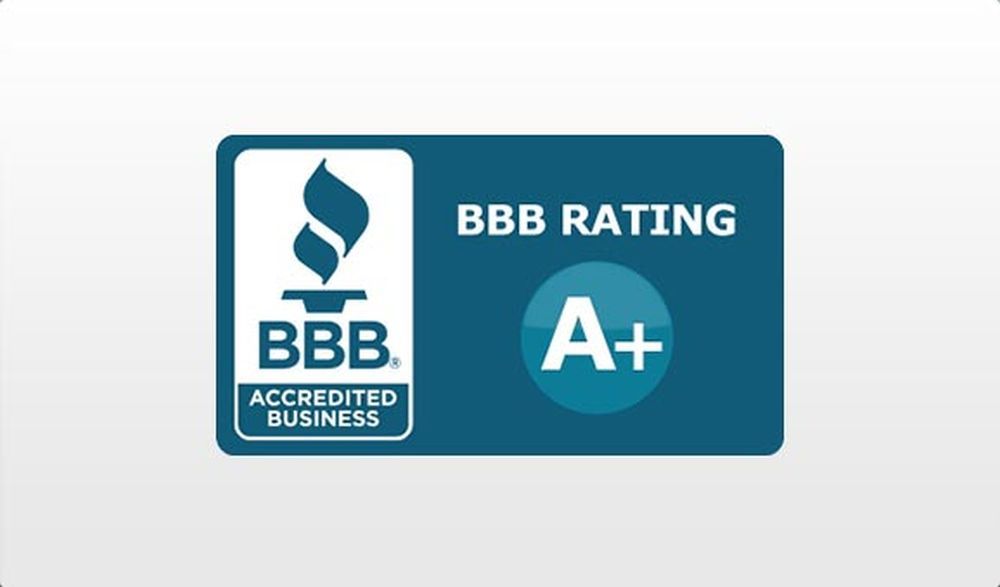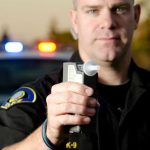Understanding Texas SR-22 Insurance Requirements After a DUI
Having to consider SR-22 insurance after a DUI conviction is never something you want to face. It can be a costly, confusing and time consuming process trying to make sense of all the requirements and paperwork associated with SR-22 insurance. It can be especially daunting in Texas, which has detailed and extensive regulations around SR-22 insurance. The good news is, once you understand the requirements, it is not impossible to get the coverage you need.
To start, youll want to understand the ins and outs of Texas SR-22 insurance. In a nutshell, SR-22 insurance proves to the state that you are able to take financial responsibility for any car accidents or damages you might cause. It provides the court and the Texas Department of Public Safety with proof that any losses can be supported financially. Texas requires SR-22 insurance when an individual has committed certain motor vehicle traffic violations, the most common being a Driving While Intoxicated (DWI) violation.
The second aspect to understand is the timeframe in which SR-22 insurance must be acquired and maintained. Once a trial has concluded and an individual is found guilty of a DWI offense, they must obtain SR-22 insurance within 15 days. For the following two years, you must keep an active SR-22 insurance policy without any gaps or lapses in coverage.
Thirdly, you also need to understand what documents you need to produce prior to receiving a policy. Most SR-22 insurance providers require applicants to provide proof of age, valid Texas identification, valid Texas license and payment information before they can qualify for a policy. Keep in mind, depending on the insurance provider, comprehensive or collision coverage may not be available, which is something to be aware of in the policy shopping process.
Fourthly, the cost of the premium varies for each driver depending on personal factors such as driving record, age, type of vehicle and coverage options. Taken all into consideration, the average premium for SR-22 insurance can range between $950 and $1,200 annually.
Fifthly, if you switch insurance companies during your time of SR-22 insurance, the new carrier needs to be aware of the requirements and notified within 20 days in order to ensure that no lapse in coverage happens and the SR-22 requirement is met.
Finally, in some cases, individuals may be eligible to obtain a restricted Drivers License. This can make life significantly easier during the period of SR-22 insurance by allowing the person to drive to and from work, school and religious functions.
The second topic of expanding the main topic is: How to Find Affordable SR-22 Insurance in Texas. Knowing all the regulations and requirements is one thing, but finding affordable SR-22 insurance options in Texas is another. Shopping around is key and the more you shop around, the better chances you have to save money.
The first thing to do before looking for a policy is to talk to a trusted insurance broker. They can provide invaluable advice and knowledge on the SR-22 process and help find you a policy that is both affordable and able to meet the strict requirements of Texas DPS.
Another great option is to research the individual insurance provider options. The vast array of providers in Texas can be confusing and its important to weed through the false advertisement and miscellaneous fees charged to drivers. Taking the time to research each option and conducting a comprehensive cost-benefit analysis can help you identify the right fit.
Another great way to save without sacrificing coverage levels is to look into the discounts offered by insurance companies. Most companies offer discounts such as bundling options, multi-vehicle, and low mileage policies. Look around at all available discounts and cash in the ones you are eligible for.
If youre finding the SR-22 rates too expensive, revisiting the deductible youre paying might help ease the burden. Deductibles vary depending on the policies you select, but the lower your put down for a deductible, the higher your premium rate will be. Consider if this is a feasible option for you or if youd rather wait until after the time period expires and you can switch to a traditional policy.
Many insurance companies also offer ways to pay a lump sum for the entire year ahead of time to can benefit from some cash savings. In some cases, insurers may also be willing to extend certain payment options if needed, such as monthly or biweekly payments.
Lastly, there are many online resources available for drivers looking to save on SR-22 insurance. These include quote comparison websites, online reviews from other customers, and forums with first-hand tips from other drivers who have gone through the same process.
The third topic of expanding upon the main topic is: Tips for Adhering to SR-22 Regulations in Texas. With having SR-22 insurance, any misstep during the two-years of having to maintain valid coverage or having any gaps in coverage will lead to an SR-22 disqualification. To ensure that you meet the requirements, there are 8 key tips youll want to keep in mind.
One, make sure to contact your insurance company as soon as the notice is received from the court. This timeframe varies from state-to-state, but for Texas it is 15 days. This notification includes important information about how and when to obtain SR-22 insurance.
Two, keep in mind that during the time that SR-22 insurance is required, you will not be able to waive comprehensive or collision coverage on your vehicle. These two types of coverage are required by the state due to your past criminal behavior and must remain in effect.
Three, make sure to pay all your SR-22 insurance premiums on time. Failing to pay the premiums on the due date or within the grace period stated on the document will result in a policy cancellation and ultimately a suspended license.
Four, during the time of SR-22 insurance, do not let the insurance on the car lapse or expire for any reason. Failing to keep the bond active at all times, even if you no longer use the car, can lead to a suspended or revoked license.
Five, if you decide to switch insurance providers, you must notify the current provider and the state at least 10 days prior. Failing to provide of proper notice of the insurance switch can lead to the old company canceling the policy without statewide notification.
Six, if a license plate is transferred from one vehicle to another, your SR-22 insurance provider must be made aware of the change. Failing to notify your insurer that a vehicle has been sold or transferred can cause the policy to be canceled.
Seven, in the unfortunate event that you are caught driving without a valid license, you are most likely endangering the eligibility of the SR-22 policy you hold. Having another motor vehicle violation may lead to the policy being immediately canceled and the license suspended.
Eight, lastly, if you do not reside in the United States when the bond is up for renewal, you can get a waiver of the SR-22 insurance requirement. In these cases, the suspension of the license can still stay in effect and this can be used as proof to the state that you have moved outside of the country.
The fourth topic of expanding upon the main topic is: How to Handle A Claim When You Have SR-22 Insurance in Texas. If youre in a car accident and need to make a claim while you have SR-22 insurance, it is important to first understand the claim process. It is also important to pay attention to the state’s rules and regulations.
The first step is to contact the police. If possible, always contact the police no matter how minor the incident may seem because without an official police report the claim may not be valid in the eyes of the chosen insurer.
Second, immediately contact your insurance company. Depending on the severity and the provider, you may be required to provide a written statement to the insurance company. This typically needs to be done within 24-hours of the accident.
Third, the insurance company requires you to gather certain evidence such as documentation of the damage done to both vehicle and witness statements when applicable.
Fourth, you will also need to provide the police report to the insurance company as soon as possible.
Lastly, the insurance company will review the claim and any evidence provided, and approve or reject the claim as soon as possible.
The fifth topic of expanding upon the main topic is: How to Reinstate Your Texas License After SR-22 Insurance Requirements. Complying with SR-22 insurance for two years is no easy feat, so congratulations if you have completed the requirements. Now the next paramount step is to get your license reinstated.
The first step is to contact the Texas Department of Public Safety (DPS). You will need to provide documentation proving you have maintained continuous SR-22 coverage such as a Form SR-22 Certificate of Financial Responsibility.
Second, all legal fees associated with the DWI incident must be paid. This includes any associated fines, reinstatement fees, as well as any court costs. Be sure to check with DPS about the exact fee structure to ensure all necessary payments have been made.
Thirdly, take and complete any additional courses should you be mandated by the courts. This includes defensive driving courses, as well as other applicable classes may be required in order to reinstate the license.
Fourth, you can take steps to improve driving skills, and screen for any medical and psychological issues. Anyone convicted of a DWI in Texas must provide a medical report to DPS indicating the status of their overall health. This includes any medical tests related to any prescriptions for medications and is required to have passed to reinstate the license.
Lastly, once all the fees and requirements listed above are met, DPS will issue you a restricted drivers license if the conviction involves Operating a Motor Vehicle While Intoxicated (OWI). Otherwise, if you meet the requirements, you can receive a full, unrestricted drivers license.
The sixth topic of expanding upon the main topic is: Different Types of SR-22 Insurance. When an individual has been convicted of DWI, they have to comply with SR-22 insurance for two years in Texas. Not all SR-22 insurance policies are created equal though, and there are three main types of SR-22 insurance to be aware of.
The first type is a Non-Owner policy. This type of SR-22 insurance is for individuals who do not own a car and dont need coverage for a specific vehicle. However, the policy does provide coverage if a person borrows a car and gets into an accident.
The second type is Operator policy. This is for individuals who do not own a car, but drive one owned by someone else on regular basis. This type of coverage provides protection if they get into an accident with the car they are driving.
Lastly is the Owner policy, which provides coverage for incidents involving a vehicle owned by the policyholder. This applies to both cars and trucks, even if the car or truck is not regularly used and sits in the garage.
Aside from understanding the three types, it is also important to understand the limits and exclusions of the policy itself. This includes the age and make of the car, restrictions for who can drive, and the maximum amount of coverage limits for collisions or physical damage to a car.
The seventh and last topic of expanding upon the main topic is: Understanding Other Alternatives to SR-22 Insurance in Texas. After having to adhere to SR-22 insurance regulations for two years, some individuals may start searching for other alternatives to maintain their driving privileges. Depending on individual cases, some may find that alternatives such as Self Insurance, Self Surety Bond and Driver Responsibility Program may be options for them to explore.
Self Insurance is available for business owners in Texas who have more than five vehicles registered under their business. This covers any liability losses that may incurse during business use, and this has to be approved by the business owners state DMV.
Self Surety Bond is also offered for those with the financial capabilities to meet the high costs involved. This involves having to put up money or personal collateral with the state DMV and in return, contracts are issued that absolve the business owner of any liability involving their daily operations.
Lastly, the Driver Responsibility Program is an alternative offered by the state more for the convenience of the individual. It allows a person to pay an annual fee instead of having to carry SR-22 insurance for the two-year period. This fee raises if points accumulate on the license and is based on the drivers age and number of violations received within a three-year period.
In conclusion, understanding Texas SR-22 insurance regulations is a must for those who have had the unfortunate experience of being convicted of a DWI offense. It can be a difficult, time-consuming and expensive process, but there are resources to help finding affordable policies throughout the downtime of the SR-22 requirement. Additionally, understanding the different types of SR-22 insurance policies, tips for adhering to SR-22 regulations and how to handle a claim if one occurs are topics that must also be discussed and understood. Lastly, understanding alternatives to SR-22 insurance like self insurance, self surety bond and the driver responsibility program are other options worth exploring as viable alternatives.




